
|
| Accept Cookies | Customize | Refuse Cookies |
Claudio Trezzani www.juzaphoto.com/p/ClaudioTrezzani  |
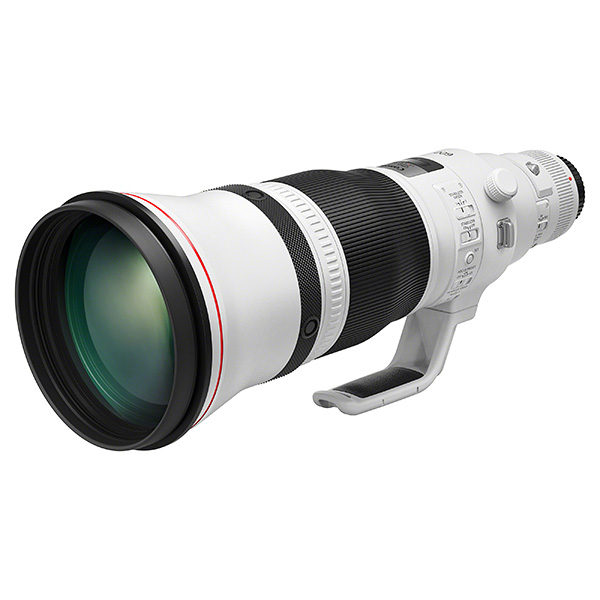 | Canon EF 600mm f/4 L IS III USM Pros: Sharpness Cons: Bokeh Opinion: The following is merely a first contact, being centered on a single session of five hundred and thirty-six shots. The lens is relatively light, considering focal, diaphragm and optical scheme. It is possible to use freehand, although - compared for example to a prolonged wielding with a 300 2.8 - I felt the need to alternate the shooting position with that of pure comfort. As far as the stabilizer is concerned, the longest time in the absence of motion notoriously depends on individual abilities. Personally, and I think many will do better, I have fallen to 80th of a second, but with alternating results. The sharpness is excellent from the very first opening. The tonal contrast, on the other hand, is not at the same high level. It should be considered, however, that the environmental priority assessment was set on camera, which gave rise to a slight over-exposure trend, which certainly did not help to determine black funds. The bokeh is soft enough, but in some situations there remain signs of unwanted nervousness. As for the responsiveness of the autofocus engine I suspend the judgment: being the lens combined with a 5D Mark IV, it was certainly not in the condition of a close dialogue with the autofocus module: for that it would be needed to try a match with a 1D series. sent on September 17, 2019 |
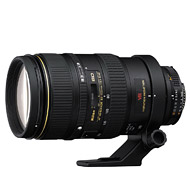 | Nikon AF 80-400mm f/4.5-5.6 D ED VR Pros: Focal excursion, construction. Cons: Sharpness at maximum opening Opinion: Simplifying: Canon the theme of 80 - 400 f4.5 - 5.6 stabilized solved it at the first shot (sharper at maximum focal and lower minimum focus distance), Nikon no. Having said that, the first Nikonian version of this declination is not without interest, and I affirm it not disjointedly from the low price at which it can be found today. At a relatively small figure you get a well-built lens, with a very versatile focal excursion, with good general sharpness. As announced, its Achilles heel is the drop in sharpness at the maximum focal. However, the advantage is that the maximum MTF value at 400 mm is reached in the center already at maximum opening, for acceptable field results. Thus, the proof of the facts results convincingly in a wide variety of situations. There is also to consider that my specimen is a freshman with first number 4, and as another reviewer explains here since this series, improvements have been made. As for bokeh, there are negative and positive premises. The negatives: it's a wide focal excursion zoom. The positives: the blades of the diaphragm are nine and rounded. On the field the consequence is: a soft base so to speak "covered" by a structured patina. A result not entirely pleasant but not even the worst. The autofocus - which only works when controlled by the camera engine, where mechanical coupling is expected - is slow, but less so than you might think when paired with modules starting with the D800/D4 series. My opinion is therefore positive when compared to today's quote: as much as you pay it, it gives a lot, and with a multiplicity of uses. sent on September 10, 2019 |
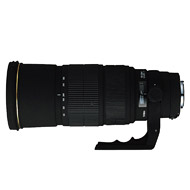 | Sigma 120-300mm f/2.8 EX DG HSM Pros: Versatility, construction, sharpness Cons: Bracket arretratarn Opinion: Purchased used today, has much to say, given the price / performance / versatility ratio. Versatility, and uniqueness in the world, with its maximum constant aperture of f2.8 in the focal length range 120 - 300. Examined its sharpness at maximum focal length, intuitively can no longer compete with the best fixed achievements Nikon and Canon, but this does not mean that it is not situated on satisfactory values. We start from the 300 mm, drawing on the surveys that made the monthly TuttiFotografi: at full aperture the average value (which takes into account each portion of the image) slightly exceeds factor 7, but at the center "holds" already a dazzling 8. The peak yield is obtained at f7.1, and this behavior is reflected almost at all focal lengths. With a warning, however: up to 150 mm there is a slight decrease in the diaphragms f3,2 and f3,5 (so, you can mnemonically give the motto: "up to half of the excursionand focal open; then, diaframmare ") In summary, however, always speaking of sharpness is a lens that can not say that it is never less good at any diaphragm, focal length is a portion of the image, and this is not a little. tripod, removable, is very backward, which does not help.It lacks a drawer filter holder, and its very generous diameter / lens means that in Nikon the continuous light of the auxiliary illuminator is partially obscured.Excellent construction, pleasant bokeh, discreet contrast. As for post-production, the Photoshop Adobe Camera Raw module contains a correction profile for this lens, while Phase One Capture has developed one for the latest stabilized version.rn sent on February 26, 2018 |
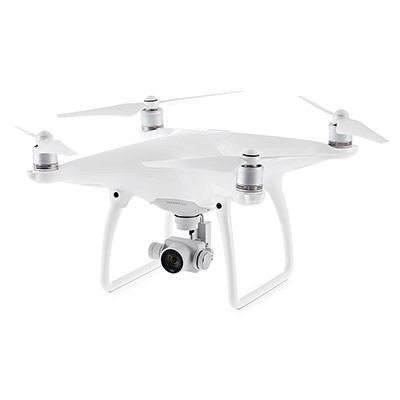 | DJI Phantom 4 Pros: Stability and "intelligence" of flying Cons: Non-raw video stream Opinion: This review refers to the Pro model: when the relevant card is published, I will transfer the text there. RnrnAll PhiTom series Dji quadricons are excellent flight devices. Stable, smart, well conceived and made. To have a model that can provide photo performance not lower than the minimum quality requirements, we had to wait for 4 Pro (followed by 4 Advanced). All the others, before, left to desire in this regard. The reason is simple: the 4 Pro mounts an inch sensor, far larger than the predecessor of two thirds of an inch. The latter I had seen on the Sony Action Room: it excels in its subdivision, even considering the 100 mbs bit rate (high resolution), high in this category, and beneficial for the video stream. But to make quality photos wanted something more. That something came with the 4 Pro, exactly. If with the Phantom 3 and 4 Pro Pro sensor were not visible on the artifacts screen, even in the sensesMinimum, with 4 Pro this disadvantage is less obviously perceptible. Also, the goal. The focal length changes from an equivalent to 20 mm in the Leica format to an equivalent of 24 mm. Which brings in the important novelty of the mechanical shutter. Thus, the annoying rolling shutter phenomenon is overwhelming. It is active up to 1/2000 shorter time, while the electronic shutter can go to 1/8000. And for the first time, the diaphragm can be manually adjusted to f11, while previously it was fixed at maximum aperture. I would be occupying too much space here if I were to dwell on video features, but one feature here is to mention it: the automatic obstacle avoidance device. Here, there are 12 sensors, including visual, ultrasonic and infrared. The 4 Pro was the first Phantom to mount them. First, the access threshold for this device was Mavic, but it still mounts a two-thirds dInch (and now some avoidance sensors are also on the Spark economy, but always with the smaller sensor). Because this aid is active, in addition to an ambient brightness level of not less than 10 lux and not more than 300, the switch on the controller is set to P, but do not worry if you notice it has inadvertently shifted: Mode P you need to access a remote configuration of the flight software to match. Which is called Dji Go 4, and gives you the ability to consider smartphones and tablets manufacturers in Android environment that do not allow for OS updates: if your device is earlier than version 4.4 and you do not want to change model, you will have to resign Buy a Phantom 3 and match it to the Dj Go not 4. In the Apple family, however, you can pair it with a less recent model as long as it can be upgraded to IOS 9. Fixed the connection problem - but be careful: an updated operating system model But little "powerful" does notIt will feel a real-time streaming video refresh - but be careful: personally I did not dare to throw the quadricopter against the thinner cables of the service cables, for their little section being unrecognizable. Water should also be recognized as an obstacle, albeit with the word just mentioned. Another safety factor is the possibility of opting for two frequencies: not only 2.4 gH, but also the least "crowded" 5.8. In addition, this high-end Phantom model allows dialogue with Russian and American satellites. It therefore points to a concept of redundancy, as in the case of sensors, to enhance flight safety. About which I recommend to read carefully the Enac legislation, updated to the amendment of December 22, 2016. It - for drones total weight less than two kilograms and P4 stops at 1388 grams - exempts from obtaining a license on condition That the following requirements apply: do not exceed 200 meters longitudinally and 70 metersin height; Use the drone for recreational or recreational use, non-profit; Do not overtake populated areas (moreover, even those who obtain the license can not do so, unless they have free passers-by). Narrow penalty for non-patented users should be inhibited by the use of the viewer, as the condition that does not allow the classification of the drone as a simple aircraft model rather than an aircraft (the original intonation of sewn rule on the aviosurpose helicopters is perceived here, No video camera), it is precisely the absence of visual aids for driving, but actually the ability to use a tablet for vision is a safety factor. In any case, be aware that the controller allows full control over autonomy, even if it finds the heavy limit to be limited to the area within which the drone can be seen with a naked eye: very limited in height, indeed. Controller whose tab bracket accommodatesModels up to 8 inches (while Phantom 3 standard and Mavic stop at 5.5 inches). The two joysticks are adjustable in height and have a reactivity that varies according to the installed guide program. A very important function (the command of which is present as others on both the controller and the external software) is RTH (Return To Home): pressing a button or taping the tablet drone will return to the base using the memory Of the route already performed (it is advisable to preset an appropriate return height in the software before using the function). There are also many other "intelligent" driving features, but they would have many pages in addition to this review if you treat them. The fact that photographic quality - shots are also available in DNG raw "universal" format, while obviously if you shoot photos during a movie, they will be taken from the compressed stream of the video (you will get up to 8.8 MP if you are shooting in4K), with a much smaller yield (however, it is possible, after cessation of the movie, to fly in flight to the photographic mode) - is now acceptable from a photographic point of view, you can complain that the video can not be even ' It worked in raw, which is possible on the top model Dji Inspire (this is useful not only for the more workability of the raw format, but also for the cleansing of the signal that such a format entails). The Adobe ACR module does not yet have a lens correction profile mounted on this model (it stops at the non-Pro version, which is unusable because of different focal points). Continuing with the post-production process, I note that in situations where a flat profile is needed, there is a possibility to count on a Dlog in the machine, but this is most useful for the video segment, which can not be recorded uncompressed. Also with regard to the video stream, let me know that ecCunning program Da Vinci Resolve makes available some dedicated LUTs. That said, by the way, I have highlighted one of the most important advantages of the 4 Pro: the maximum expression of the Phantom series with regard to image quality, also represents the upper limit of normal portability: there are dedicated backpacks that allow you to carry your shoulders very easily 4P and All its accessories, while Inspire has significantly larger footprints. Better still be flying your professional reflex, but I will not mention you costs and complications, so you will not impress ... sent on June 29, 2017 |
 | DJI Phantom 4 Pros: Stability and "intelligence" of flying Cons: Non-raw video stream Opinion: This review refers to the Pro model: when it releases its card, I will transfer the text there.rnrnAll PhiTom series Dji quadricons are excellent flight devices. Stable, smart, well conceived and made. To have a model that can provide photo performance not lower than the minimum quality requirements, we had to wait for 4 Pro (followed by 4 Advanced). All the others, before, left to desire in this regard. The reason is simple: the 4 Pro mounts an inch sensor, far larger than the predecessor of two thirds of an inch. The latter I had seen on the Sony Action Room: it excels in its subdivision, even considering the 100 mbs bit rate (high resolution), high in this category, and beneficial for the video stream. But to make quality photos wanted something more. That something came with the 4 Pro, exactly. If with the Phantom 3 and 4 Pro Pro sensor were not visible on the screen artifacts even to sensbMinimality, with 4 Pro this disadvantage is less obviously perceptible. Also, the goal. The focal length changes from an equivalent to 20 mm in the Leica format to an equivalent of 24 mm. Which brings in the important novelty of the mechanical shutter. Thus, the annoying rolling shutter phenomenon is overwhelming. It is active up to 1/2000 shorter time, while the electronic shutter can go to 1/8000. And for the first time, the diaphragm can be manually adjusted to f11, while previously it was fixed at maximum aperture. I would be occupying too much space here if I were to dwell on video features, but one feature here is to mention it: the automatic obstacle avoidance device. Here, there are 12 sensors, including visual, ultrasonic and infrared. The 4 Pro was the first Phantom to mount them. Before the price access threshold for this device was Mavic, which still mounts a sensor of two-thirdsInch (and now some avoidance sensors are also on the economical Spark, but always with the smaller sensor). Because this aid is active, in addition to an ambient brightness level of not less than 10 lux and not more than 300, the switch on the controller is set to P, but do not worry if you notice it has inadvertently shifted: Mode P you need to access a remote configuration of the flight software to match. Which is called Dji Go 4, and gives you the ability to consider smartphones and tablets manufacturers in Android environment that do not allow for OS updates: if your device is earlier than version 4.4 and you do not want to change model, you will have to resign Buy a Phantom 3 and match it to the Dj Go not 4. In the Apple family, however, you can pair it with a less recent model as long as it can be upgraded to IOS 9. Fixed the connection problem - but be careful: an updated operating system model But little "powerful" you do not mindA real-time streaming video refresh - but be cautious: personally I did not dare throw the quadricee on the thinnest wire of the service cables, for their little section being unrecognizable. Water should also be recognized as an obstacle, albeit with the word just mentioned. Another safety factor is the possibility of opting for two frequencies: not only 2.4 gH, but also the least "crowded" 5.8. In addition, this high-end Phantom model allows dialogue with Russian and American satellites. It therefore points to a concept of redundancy, as in the case of sensors, to enhance flight safety. About which I recommend to read carefully the Enac legislation, updated to the amendment of December 22, 2016. It - for drones total weight less than two kilograms and P4 stops at 1388 grams - exempts from obtaining a license on condition That the following requirements apply: do not exceed 200 meters longitudinally and 70 metersin height; Use the drone for recreational or recreational use, non-profit; Do not overtake populated areas (moreover, even those who obtain the license can not do so, unless they have free passers-by). Narrow penalty for non-patented users should be inhibited by the use of the viewer, as the condition that does not allow the classification of the drone as a simple aircraft model rather than an aircraft (the original intonation of sewn rule on the aviosurpose helicopters is perceived here, No video camera), it is precisely the absence of visual aids for driving, but actually the ability to use a tablet for vision is a safety factor. In any case, be aware that the controller allows full control over autonomy, even if it finds the heavy limit to be limited to the area within which the drone can be seen with a naked eye: very limited in height, indeed. Controller whose tab bracket accommodatesIe models up to 8 inches (while Phantom 3 standard and Mavic stop at 5.5 inches). The two joysticks are adjustable in height and have a reactivity that varies according to the installed guide program. A very important function (the command of which is present as others on both the controller and the external software) is RTH (Return To Home): pressing a button or taping the tablet drone will return to the base using the memory Of the route already performed (it is advisable to preset an appropriate return height in the software before using the function). There are also many other "intelligent" driving features, but they would have many pages in addition to this review if you treat them. The fact that photographic quality - shots are also available in DNG raw "universal" format, while obviously if you shoot photos during a movie, they will be taken from the compressed stream of the video (you will get up to 8.8 MP if you are shooting in 4K), with a much smaller yield (however, it is possible, after cessation of the movie, to fly to the photographic mode) - is now acceptable from the photographic point of view, you can complain that the video can not be even ' It worked in raw, which is possible on the top model Dji Inspire (this is useful not only for the more workability of the raw format, but also for the cleansing of the signal that such a format entails). The Adobe ACR module does not yet have a lens correction profile mounted on this model (it stops at the non-Pro version, which is unusable because of different focal points). Continuing with the post-production process, I note that in situations where a flat profile is needed, there is a possibility to count on a Dlog in the machine, but this is most useful for the video segment, which can not be recorded uncompressed. Also with regard to the video stream, let me know that the etcThe Da Vinci Resolve program counter makes available some dedicated LUTs. That said, by the way, I have highlighted one of the most important advantages of the 4 Pro: the maximum expression of the Phantom series with regard to image quality, also represents the upper limit of normal portability: there are dedicated backpacks that allow you to carry your shoulders very easily 4P and All its accessories, while Inspire has significantly larger footprints. Better still be flying your professional reflex, but I will not mention you costs and complications, so you will not impress ... sent on June 29, 2017 |
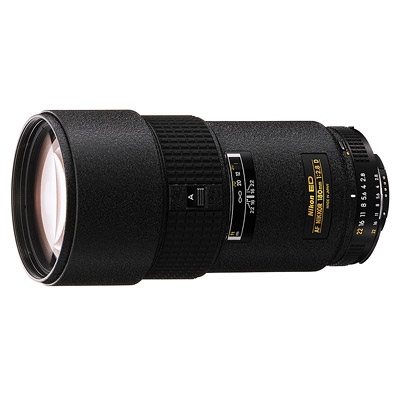 | Nikon AF 180mm f/2.8 D ED IF Pros: sharpness, tonal stamp Cons: AF, purple fringing Opinion: 3Bultimo behind the focheggiata area), defect which is common at the best goals of this class. The tonal timbre is bright and airy, with a lightness that goes in the direction of the one revealed on some Leica lenses. The autofocus is slightly below average compared with Nikkor does not have an internal motor, which is certainly not a good thing. However, being able to do a dialogue with the best autofocus modules of the most recent digital its functionality does not preclude any opportunity that is not the maddeningly sport. I conclude by pointing out the renowned strength and practicality of the extraction hood. sent on March 19, 2017 |
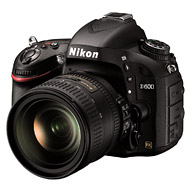 | Nikon D600 Pros: sensor Cons: limiting functions Opinion: One of the most underrated and best Nikon's full frame sensors. Underestimated, because after the oil slip, Nikon belatedly making the shutter replacement free of charge. Best, because - also because of the balanced density - is still one of the best, with nuances in the signal / noise ratio slightly less perceptibly than the D750. For the rest, I agree with my colleagues here: the only real drawback is the least autofocus sensitivity compared to other Nikon achievements. But even here, it should be understood: it is much less sensitive than that of the D800, for example. However, this limit is apparent only in markedly low brightness condition, while in all other situations it fast and accurate show. Then there is the issue of the concentration of focus points at the center: the landscape pua be a problem, in other areas not. The body. The game is noto: just put some great content in a body less than others of the same make, then worse some features to avert the risk of commercial cannibalization. So we do not have the '1/8000, the housing for the fastest CF cards, the syncro socket for flash and for cable remote attack. Personally I find annoying the absence of a dedicated AF On button: you can tell the machine to assign this function to the AE-L button / AF-L (or to more uncomfortably positioned Fn) key, but in this case it loses the possibility of halfway focuse with the shutter button. sent on December 25, 2016 |
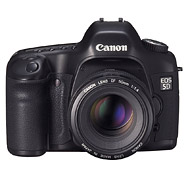 | Canon 5D Pros: He made history, and not by chance. Cons: tolerable deficiencies at the time: live view and video function Opinion: You are landscape photographers or portrait artists? Buy this one, today. On the stand, and with a good 17 40 mm f 4, drawing on the used market will have sublime results in less than one thousand euro, provided you do not want to crop. And if portraitists, the subjects WILL RETURN bewitching plasticity if the match it to the optical generous relative openness. sent on November 22, 2016 |
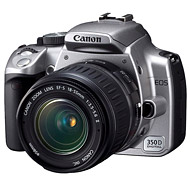 | Canon 350D Pros: General features, monochrome display on the cover (abandoned since the 400d) Cons: nobody, considered age and location Opinion: He solved the many problems of the 300D. He gave the same - excellent - the coeval 30D sensor. It was the last - in the category - with monochrome display on the cover, then abandoned by the 400D. Purchased today, it is for beginners who are early connoisseurs. Why s'avvederanno than it's worth, on the field, a design wisdom. sent on November 22, 2016 |
 | Nikon AF 70-210mm f/4-5.6 D Pros: contrast, AF speed, portability, price Cons: slight drop in yield at the maximum focal length, maximum aperture Opinion: I agree with what was said by my colleagues: it is a lens that has a value / price amazing. I bought it used, in perfect condition, 100 euro, and that figure is has a lens by the excellent tonal contrast, the remarkable sharpness (only a slight decrease to the minimum focal length and maximum aperture). The AF is incredibly fast, to be a lens without internal motor. obviously we must deal with the maximum not generous opening (it is still unusually moved downwards in the sense that the closing of the iris to the progress of the focal occurs keeping the larger opening later than you usually experience this type of goals ). Moreover, by limiting the zoom range to a 3X and not offering large apertures, the Nikon engineers have had a good base to work on, and have accomplished the task at best. Note that in macro the minimum focus distance is reduced to 1.2 meters. Defocused has the typical configuration occhio Cat of the bright spots, but the background is rendered with a nice soft feel. sent on November 10, 2016 |
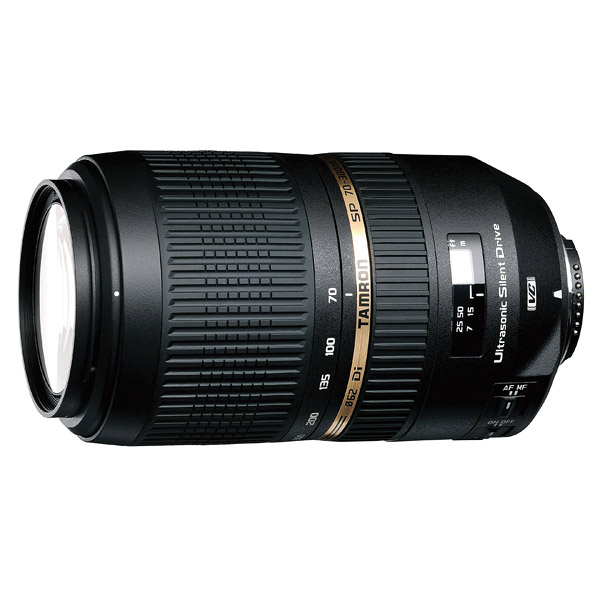 | Tamron SP 70-300mm f/4-5.6 Di VC USD Pros: tonal contrast even at maximum focal. significant microcontrast to about 175mm. quality / price ratio in the incomparable class. Cons: The "constitutional" limits of the project. Opinion: I had in this temporary trial lens for a period of time not sufficient for a comprehensive evaluation, and yet sufficient for the identification of some salient features. The response is: has exactly the qualities that give it, with temperate limits of the price. Specifically: remarkable resolution up to 175mm focal length. In addition, the cove resolution up to intolerable values ??for professional use, but the tonal contrast remains at unusually positive values ??for the category. sent on September 27, 2016 |
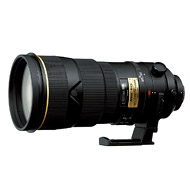 | Nikon AF-S 300mm f/2.8 G ED VR Pros: All those already described by colleagues. Cons: VR improvable Opinion: In the special section I described my experience with AFS previous version VR. Here I write some of the VR version notes, which I then had. In AFS page I do not spread on the VR resolution at full aperture to slightly above the center of the old version, compared with an equivalent contrast. I then wrote that this VR version weighs slightly less than the non-VR, but it is much better pivoting freehand both for the different conformation of the bracket to stand, for both the distribution of unbalanced weights less towards the end. As for the general merits, I can only adhere to the ratings colleagues remarkable sharpness, bokeh intriguing, superb construction and weather sealing. The presence of the treatment to nanocrystals (a layer of silver crystals often a millionth of a millimeter) the warn in a slightly greater tonal contrast in backlit situations also not total, but still "difficult". About the effectiveness of the VR first manner, I situate my personal safety limit around 1/100 of a second, with peaks of1/50. Sure others will do better, but Nikon says that the VR II version has improved in this respect (and now adheres to CIPA measurements, for that finding, for the VR II, 3 gain stop). sent on September 10, 2016 |
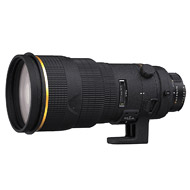 | Nikon AF-S 300mm f/2.8 D IF-ED Pros: Incision and contrast even at full aperture. Construction. bokeh qualities. Cons: ergonomics and weight distribution Opinion: I had this lens for a few days (nevertheless sufficient to run about five shots), having then returned for a autofocus problem, and simultaneously buying the following version VR. I'm leaving this review so as not AFS VR before moving - in special sections - a note on the VR version. Granted - and accepted - the high weight, I have to say that I could still sit hand-free sessions of over a thousand shots without experiencing soreness in the upper limbs (but paying attention to the back: for example, I never left the lens hanging from his neck, worth an unwanted whipping the spine ...). Moving on to the VR version (of which, as I wrote, I will say the page dedicated to it) but I have seen that the new version weighs a little less but it is much better pivoting, both for the different conformation of the bracket to the stand, either because the weights are less unbalanced towards the end. Some say that this version does not VR has a higher incision wide open thanVR versions following. The MTF charts published by the same Nikon give them reason: the spatial frequency of 30 lines per millimeter that no VR is slightly higher than the center of the VR, and then equate the edges. Therefore under these conditions it has a slightly higher resolution, while the contrast (measured at a spatial resolution of 10 lines per millimeter) is almost identical to the VR version. it must be stressed that the use on field we are talking about very high levels (taking into account different scale of MTF values, the interpretation given by monthly TuttiFotografi, the recognition of which is the median, the value is close to the factor 9), in both cases capable of generating pleasure to the eye. sent on September 10, 2016 |
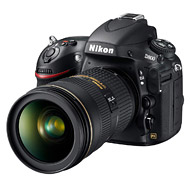 | Nikon D800 Pros: Resolution. Construction. AF sensitivity Cons: Contrast-detect autofocus in video mode Opinion: At first I was skeptical: I feared that the price to pay for the all-new (in the field of 24 X 36 mm) pixel density was excessive noise. Not so, considering the comparison with the same print size with other cameras. And the 36 MP Youths wonderfully, for example in street photography done using telephoto lenses, to reconsider clippings, make explorations in the image looking for new readings. Another considerable advantage - even compared to the excellent predecessor D700 - is the remarkable sensitivity auto focus, accompanied by an equally remarkable rapidity. As for the video industry, very valuable the ability to produce uncompressed video using external recorders connected with an HDMI cable. However, a significant weakness - but common, at the time when this camera was conceived - is represented by the focus for law enforcement rilvazione, in video field: almost unusable, and slowness,indecision, instability. sent on August 08, 2016 |
 | Nikon 300mm f/4 AF-IF ED Pros: optical quality. Enjoyable blurred. Excellent construction. Cons: Internal engine does not have a focus, as other objectives of his generation Opinion: Creaminess. Only for this, it should be purchased. A bokeh pictorial die, an outside fire clean, round, bright. It has many other qualities, this lens. Sharpness, too. If only the Nikon D800 on the latter feature is a bit 'thrown into crisis by dialogue with resolute sensor, here excellence would have kept without making distinctions. Another small weakness, but common to contemporary objectives: does not have the internal engine of focus, touch to rely on what the machine (provided it is not an entry level, which does not have the power take-off near the union to do so). Result: the AF is not as rapid as objectives that the internal motor have it. But we must go from here. It 'a beautiful goal, is to make people understand what it means mellowness not separated by etching. sent on August 05, 2016 |
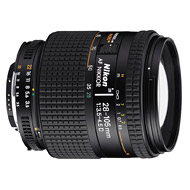 | Nikon AF 28-105mm f/3.5-4.5 D Pros: sharpness, construction, focheggiatura close Cons: maximum aperture Opinion: It 'a series lucky, even before the autofocus versions, that of the standard zoom dilated at the remote (85; 105) and intermediate opening (3.5 / 4.5) Nikon: the house has produced a significant number of variants, and among them this 28,105 AFD stands. Well-built, sharp, good yield even in macro function (however awkward its selection) that is capable of 1.2 to the maximum focal length. AF is not instantaneous but more than acceptable when compared with the best performing modules in the car. A plus nine diaphragm blades. Incidentally, FIG among the models no longer in production entered in the database of correction of Capture One, while Photoshop has not applied a specific adjustment for this successful lens (however, provides adjustments for a greater number of targets neighboring and contemporary, compared excellent Capture One). sent on December 06, 2015 |
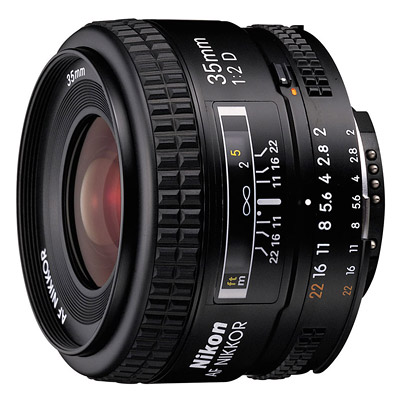 | Nikon AF 35mm f/2 D Pros: incision, contrast, compactness, minimum distance of focus Cons: vignetting, bokeh Opinion: Not by chance is the lens (replaced by 35 1.8 DX for APS - C) that still uses the periodic TuttiFotografi to detect in the laboratory of Nikon cameras. Of course, it is fixed focal length and have a rather simple optical scheme helps achieve clarity, but the micro-contrast that I found on this objective exceeds all my most optimistic expectations. It 'a micro-contrast "hard", it tastes like that of a macro lens, and I like a lot, as possessor of Rolleiflex T with Tessar. Even the tonal contrast is crisp, just more suffused with wider openings. Bokeh (the slats are seven and not rounded) is a bit 'nervous but not annoyingly structured. Vignetting is pronounced on a 24 X 36, with the obvious reduction of DX. Reduced size where you feel even less loss of sharpness at the edges, knowing that the image circle is not reduced us to see those extremes. But as Ryuichi Watanabe MTF does not say everything about a lens we are in the presence of alens whose etching the situation in another world, higher than the performance of many zoom, and vignetting is a phenomenon that can be used for artistic purposes, not to mention that diaframmando af 8/11 for a landscape even these limits are convincingly exceeded. A lens by the amazing quality / price ratio and the focal very versatile for a variety of situations. sent on October 08, 2015 |
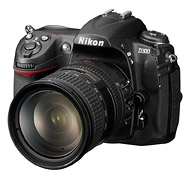 | Nikon D300 Pros: body, commands, functions, autofocus Cons: controversial outcomes noise Opinion: It was the reference in the ODA - C. The body is then - stretched - was the D700, and than it seems wider, because the monochrome display on the cover here is not to deal with the housing plus pentaprism. D700 also anticipates the efficient autofocus module (coeval with the D3), with the advantage that the 51 points lapping closer margins of the frame. The burst is remarkable, but is drastically worsening if you shoot in RAW 14 bit. Ability to customize and physical access to their command of the professional level. As for the noise, it is necessary to distinguish: it looks surprisingly content to high sensitivity, but remember that the periodic TuttiFotografi highlighted in the laboratory the onset of a filter inescapable since the ISO 800 (also in RAW, albeit less intense) that even allowed him to measuring coefficients lower than the sensitivity of ISO 400. Therefore, the cleaning is achieved at the expense of dettaglio end. Porporzionalmente more pronounced - albeit grit dry, with little accentuated color component - the noise at medium and low sensitivity. It also notes - as can happen even if infrequently, are not the first to highlight - that the implementation of fractional sensitivity, not corresponding to the multiple of the native, can result in some trimming. Leaving aside the third of ISO, I have for example found at 220 (ISO sensitivity that can be chosen in automatism of this parameter in combination with manual or priority of exposure) an intensity noise is not correlated to the values ??of neighboring signal amplification. Of course, it was found on the raw file set to a picture style and conservative values ??of the parameters kept to default. sent on September 14, 2015 |
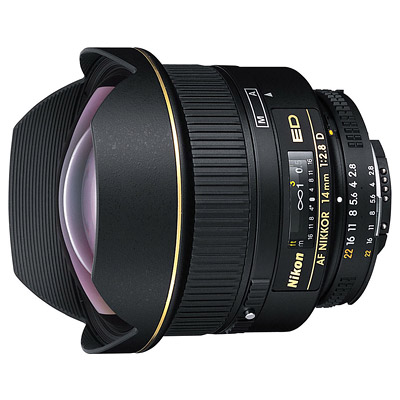 | Nikon AF 14mm f/2.8 D ED Pros: sharpness in the center, even at full aperture Cons: ghosting Opinion: Nikon has made a choice. And it was this, the choice: in the case of 14 mm, does not answer the countermove of Canon. In the sense that: there was a second version for this angle, as it did for his Canon. Result? The Canon 14mm f2.8 is particularly attractive, the same focal length and aperture Nikon, less. This happened because in the meantime Nikon preferred churning 14 24 2.8. That is a lens very successful, as in sharpness. But beware: the minimum focal distorts too. Which means: the minimum focal, after adjustment, no longer a 14mm, and is no longer so clear. The 14mm f, 28 fixed - the lens here reviewed - distorts less than quoted zoom, but not less than the competitor Canon. And also suffers from ghosting against the light that was not enough, I think, highlighted. For this reason I sold it, the Nikon 14mm f2.8. From Nikonist which are now, between this and the Nikon 14 24, I would choose ... the Zeiss 15mm F3.5. sent on December 07, 2014 |
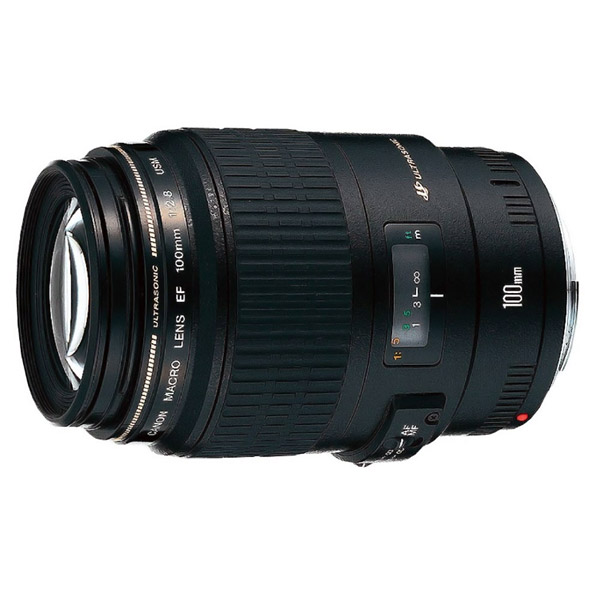 | Canon EF 100mm f/2.8 Macro USM Pros: sharpness Cons: absence stabilization Opinion: Does not extend focheggiando, and this is a lot. Why is it difficult to find a macro lens that is not clear, between the various models of the builders. But enjoy the advantage of not stretching, not everyone. Then, it is a macro modern. In the sense that gets along very well even indefinitely. I used it for portraits, sometimes for landscapes, beyond the obvious use at close range. Particularly as to correct distortion and light fall on the edges, it is a pleasure to open an image editor, select the hotfix dedicated, and find that the preview image does not happen much. No stabilization, as the model that has followed. But the price, helps to console. sent on December 07, 2014 |
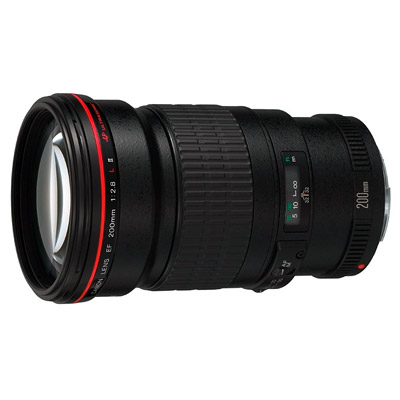 | Canon EF 200mm f/2.8 L II USM Pros: optical quality, construction Cons: versatility Opinion: It 'a species in danger of extinction. Undeservedly, in part. I refer to the telephoto fixed not exasperated. Typically, a 200 mm. Of course, not being able to zoom in on occasion are lost, irretrievably. But the advantages are: relative lightness and quality. And 'the case of this goal. Lightweight, given the focal and the relative aperture. And the quality is there throughout. Good sharpness even at full aperture, and the star from 'F4.5 up. Construction cured and convincing color rendering complete the picture. For those who do not intend to go down to some compomesso with the quality but does not have an unlimited budget. sent on December 07, 2014 |
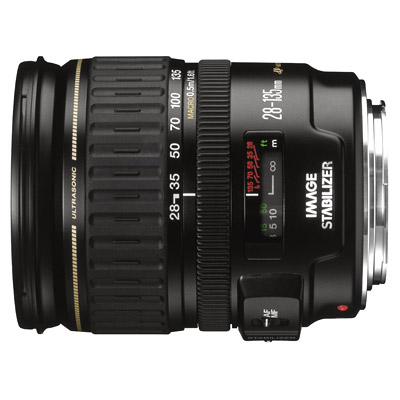 | Canon EF 28-135mm f/3.5-5.6 IS USM Pros: versatility, robustness Cons: extreme focal underperforming, stabilizer first generation Opinion: And 'the story of many. A range of focal optimal and well used, surrounded by extreme forcibly stuck. 28 135 from 50 to 70 mm fixed focal length makes it as good. In this context, my hat. Extending up to 100 mm, the yield is still maintained at high level. To 135 mm, the MTF undergoes a pronounced downturn. On the opposite side, the yield is good to 35 mm, but the distortion to 28 mm is above average. The color yield is satisfactory, as well as the tonal contrast. Solid construction and stabilizer (although first-generation, less effective than it will be done later) complete the picture of a lens that now appears on the used market quotes very interesting. sent on December 05, 2014 |
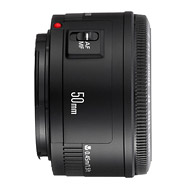 | Canon EF 50mm f/1.8 II Pros: optical quality, price Cons: construction, boken Opinion: To be or to have? The appearance is not the most inviting: plastic even the bayonet, no window or distance ladder, ring focus almost nonexistent. Yet the numbers do not lie: Aperture more yield achieves peak MTF rivals the samples of the specialty. And without any inferiority complex - from 2.8 onwards - even with his older brother F1.4. Price to pay for so much exuberance is a boken a bit 'too nervous and structured. But just think about this: a few years ago the lens kit with the entry level SLR film was this, and in this regard I highlight a detail which I find enlightening: manuals Canon still show a picture of a chessboard with a ' only pawn in focus, to illustrate the possibility of reducing the depth of field in the aperture priority. Well, with the zoom kit today in this operation is simply impossible. This would be enough to induce a dotarsene, also saw the paltry sum compared to the great optical quality. sent on December 04, 2014 |
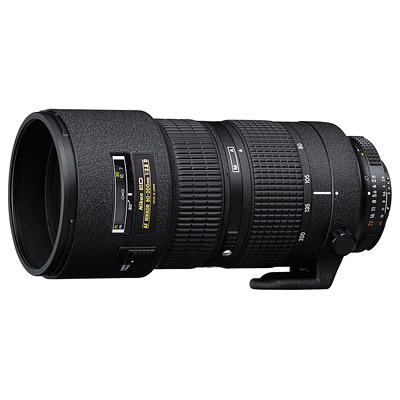 | Nikon AF 80-200 f/2.8 ED D Pros: optical quality Cons: compatibility autofocus Opinion: Stickiness and engraving. O of the compromise between the two instances. This is the 80 200 True union. Slightly less impact of the current 70 200, but characterized by a pleasant creaminess of surrender. Some professionals still prefer, for this. How to reactivity assisted in focusing a, I can say - having previously had a copy of the pump model - who is from True union that in this respect the behavior can comiunciare to define fine (although an optimal response will come only from the versions that follow). An article very desirable in the used market, for prices that currently there. With the only known warning: combined with Nikon digital SLR purely amateur, can not work in AF mode. sent on December 03, 2014 |
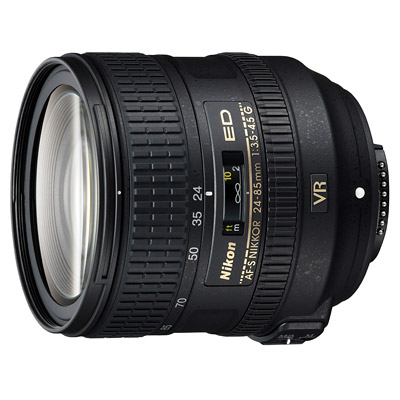 | Nikon AF-S 24-85mm f/3.5-4.5 G ED VR Pros: homogeneity of yield, price Cons: sprained minimum focal maximum aperture Opinion: Objective underestimated? I think so, as I am about to explain. Placed in the category of seminfamante "zoomini kit", Nikon offers it in conjunction with some full-frame digital SLR, fate it shares with the most expensive 24 120 f4 aperture constant. Compared to the latter, I have no hesitation: subject to greater build quality and greater openness in maximum configuration canvas, 24 85 has the rare advantage - that can not boast even emblazoned 24 70 f2.8 - not to accuse cali yield at maximum focal length, where the 24 120 gives miserably, resulting usable little closer to 100mm. If we opt for the non-stabilized version, the value for money is even more interesting. Renouncing constitutionally plasticity of a lens from the focal generous opening, the landscape you will benefit of pleasant surprises around f8. Defects? The distortion at 24mm: Photozone has measured a value of 3.78%. Nevertheless, competitors are not much better in this respect. sent on December 03, 2014 |
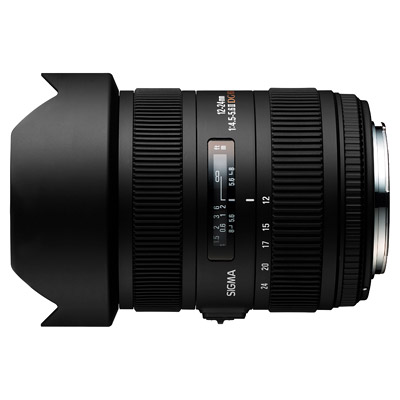 | Sigma 12-24mm f/4.5-5.6 II DG HSM Pros: made from 14 mm onwards Cons: variability of tuning between specimens Opinion: Why buy a Sigma 12 24mm? To have a good 14 mm. No joke at all: if performance at shorter focal suffer from a noticeable drop in sharpness at the edges and a pronuciata distortion, even at 14 mm things improve greatly, and do not forget that, for example, the famous Nikon 14 mm 24 is so sharp at the edges, even at minimum focal length, but has a distortion embarrassing, far superior to that of the disk of the same house. Moreover, already in the Sigma 12mm is very sharp in the center, thus lending itself to certain effects. The peak yield is between 17 and 21 mm, where the performances take place in a bed of excellence. So, we are faced with a lens from the quality / price ratio very interesting. To be lucky, though. This is because even in the second version of some defect of alignment was found in some specimens. In my case I recorded, although at levels not dramatic, a mismatch that led to a visible decline of definition in the left frame. sent on November 30, 2014 |
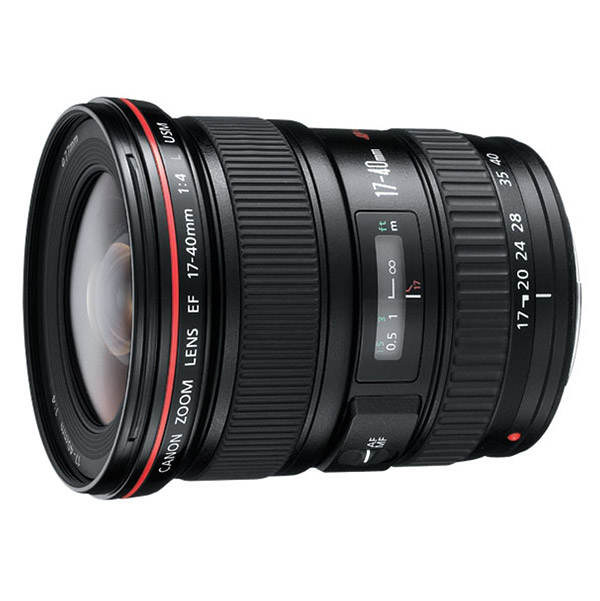 | Canon EF 17-40mm f/4.0 L USM Pros: tonal contrast, tropicalization Cons: distortion, sharpness decrease the maximum focal Opinion: When I had a kit lens Canon this was my favorite in a specific aspect, I will mention at the end of this quick review. Limits? That constitutional: a maximum aperture that does not go beyond f 4 is not so much a problem for shutter speeds, given the progress today to reduce noise to the progressive electronic signal amplification, as is detrimental because of the plasticity of ' image, even considering that the good minimum distance of focus would play on the wide-angle perspective planes also. Wide-angle focal suffering from noticeable distortion, but no more than other achievements not fixed .The sharpness is good but suffers from a distinct change in the focal length. The weather sealing is something that gradually becomes more important, taking into account that the weather sealing of the bodies is spreading even in cameras not high level, a feature that is partially thwarted by the combination with optical unprotected. The exact appearance of which I said INIuncle? Here it is: the tonal contrast. This lens has a tonal contrast well defined, which I have rarely encountered in other objectives, to the point that in some cases i decided not to make the slightest adjustment of the curves in postproduction. sent on November 30, 2014 |
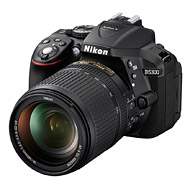 | Nikon D5300 Pros: sensor, autofocus, monitor articulable Cons: not autofocus with all AF, dislocation buttons, limit "constitutional" the APS - C Opinion: This camera is the flagship of the amateur as well of the House, and with these shares the remarkable limit of not being able to control the auto-focus lenses without an engine inside, which unfortunately excludes a number of lenses also recent, in contradiction with the fact that those who buy these cars would save, drawing on the used market for the goals. Having said that, nevertheless presents a plethora of very interesting features in its market segment. The Raw can be 14-bit (possibility denied the D3300), but one can not choose the compression (as in D7100). The points of focus are 39, a record in this price range. The monitor articulable represents a benefit of great use in various situations. As for the sensor, its yield is even better than that of the D7100, as it is interfaced to a processor of the next generation, whose algorithms allow to "shaping" something on the electronic noise. Sore, which betrays its economic origin, is the position very tight angle of the timer button, located at the bottom next to the junction of optics. Finally, the resolution must always be remembered that the high density of pixels and the absence of anti-aliasing filter can nothing compared to the objective concept of spatial resolution: the same goals that we can use in the full format work on higher frequencies, resulting in an inevitable decay yield MTF. sent on November 30, 2014 |
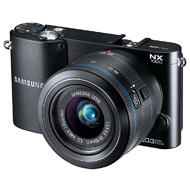 | Samsung NX1000 Pros: complete functions, quality / price ratio Cons: slow processor Opinion: I bought it with the objective 20 50 mm. I recommend this combination for two reasons: it is collapsible, so marrying the need for compactness inherent in a mirrorless, and has an excellent performance, considering the category of membership. Duty paid excursion focal limited in wide angle, you get a lens sharp and balanced. the camera is packed with features, and particularly appreciate the presence of a spirit level on two axes, which can be maintained at the monitor with a non-invasive pictogram below. A minor annoyance is the slow acquisition of files, an operation during which - unlike other machines - you can not turn on the play. sent on November 30, 2014 |
 JuzaPhoto contains affiliate links from Amazon and Ebay and JuzaPhoto earn a commission in case of purchase through affiliate links.
JuzaPhoto contains affiliate links from Amazon and Ebay and JuzaPhoto earn a commission in case of purchase through affiliate links.May Beauty Be Everywhere Around Me